Kyoto, Japan
Located up Kiyomizu-zaka, a slope on the east side of Higashioji-dori is the famed Kiyomizu-dera 清水寺. During my last visit, I did not visit the interior because it was terribly crowded.
So this time round, YY and I headed to this temple early in the morning before the invasion of student excursions and tour groups.
The Niomon in the morning (without tourist crowds!)
Detail of the Niomon, an important cultural property that was re-built in the 15th century.
The bright colours, also observed in the Sanju-no-to are typical of Buddhist temples, reflecting influence from Chinese architecture.
A couple enjoying some time to themselves with a view of the city near the Sanju-no-to.
Even outside the ticket area, one can get a decent view of Kyoto.
Located outside the ticket area, the Sanju-no-to or Three Storied Pagoda is another recognizable feature of Kiyomizu-dera. It is the tallest three-storey pagoda in Japan. The vermilion pagoda was rebuilt in 1633 and repainted in 1987.
We were so early that the staff of the temple were still cleaning the temple and the souvenir shops has yet to open. The entrance fee to the temple cost 300 Yen.
On certain periods of the year such as the cherry blossoms period, it is also opened at night for the night illuminations. There was a night illumination going on when we visited the temple that takes place from 1830 to 2130 hours.
The temple was founded in 788 AD and dedicated to the 11-face Kannon. The temple is probably most recognized for its main hall (hondo) which sits perched out over the mountainside on massive wooden pilings.
On the verandah (butai) that juts out over the valley floor, we could see prominent landmarks of Kyoto such as Higashi Honggan-ji, Kyoto Station and Kyoto Tower city. The city was framed by hills and mountains on the horizon. It was quite a sight as the sun was rising.
Besides the interesting structure of the verandah, there was still some autumn foliage left to enjoy although it has passed its peak.
It was quite peaceful early in the morning.
Ema with wishes written on them, a common sight in Shinto and Buddhist shrines and temples.
From the main hall, the stairs lead down to Otowa-no-taki, a waterfall where visitors can sip water from a spring that is said to have many health benefits. It was from this spring where the temple got its name from.
The temple is easily accessible via bus from Kyoto Station and gets extremely packed during the afternoon or late morning. Not surprising, as it is one of most common landmarks to be found on the itineraries of any packaged tours by the major tour agencies in Singapore, along with Kinkakuji and Nijo Castle.
Colourful Koyo.
A view of the Sanju-no-ta uphill.
Downslope there is a pond with ducks.
Not photographed inside is a large group of students having a group photo taken at the steps. There were many students visiting the temple as we were leaving.
We took a few more photographs as it got brighter and the sunlight creates a greater contrast.
As mentioned before, the best time to visit this temple is in the early morning. It got quite crowded by 0730-0800 Hours with students and tourists spilling all over the place as it is a very popular sightseeing spot. Personally, I am intrigued by the structure that is supporting the verandah as well as the autumn colours.

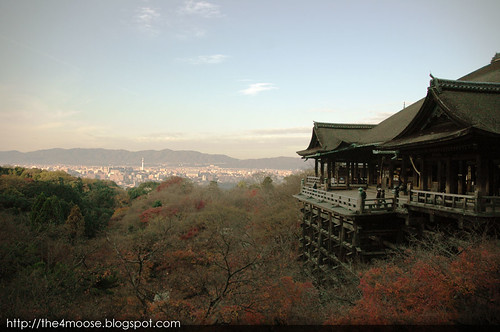
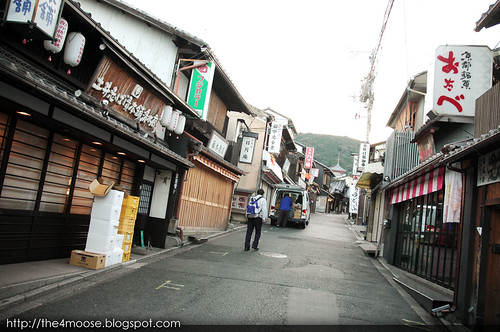
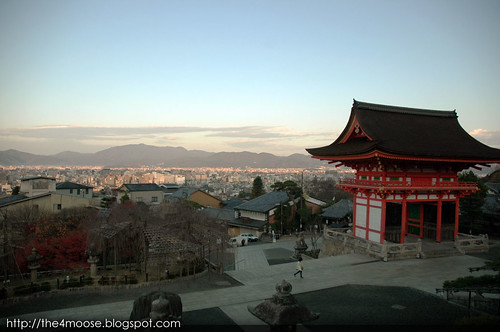
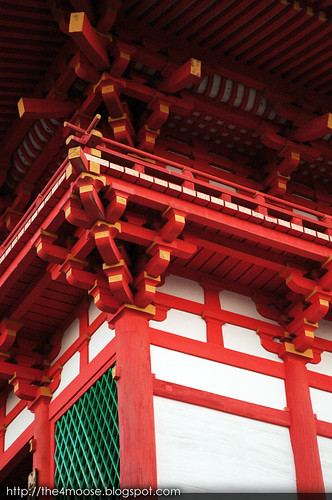
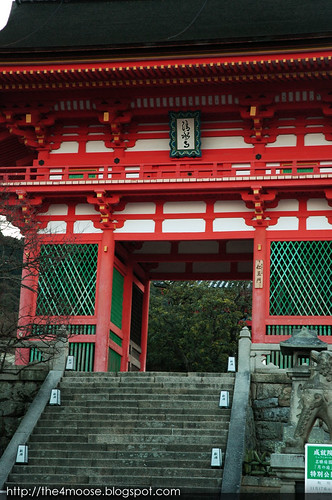
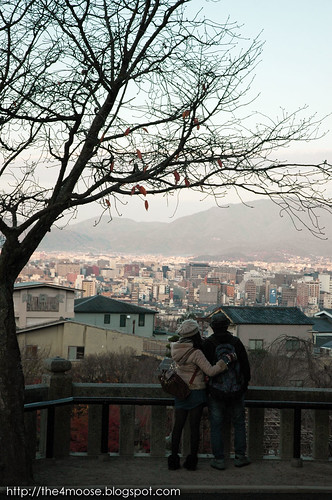
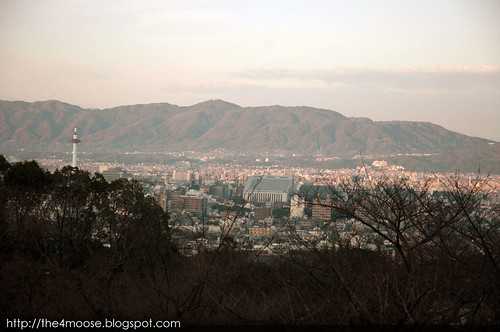
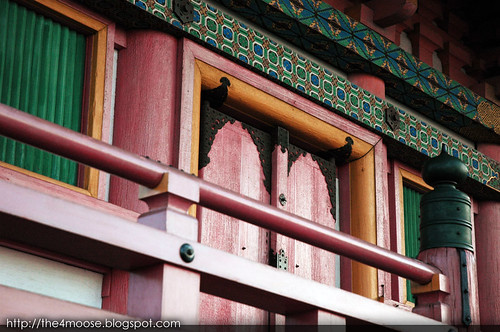
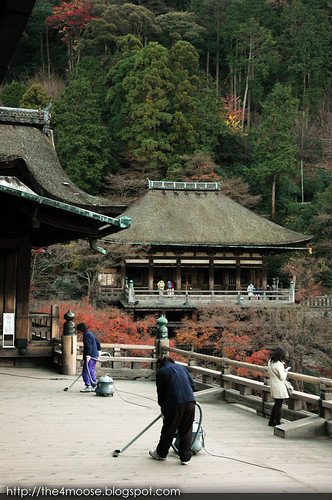
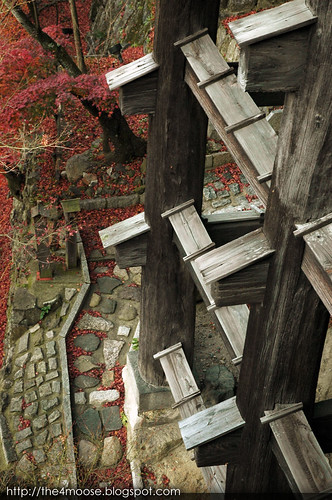
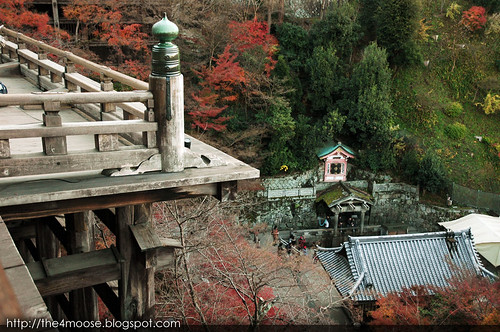
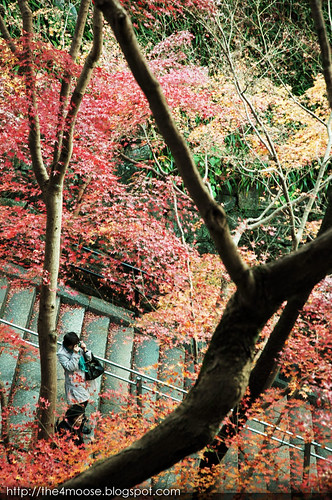
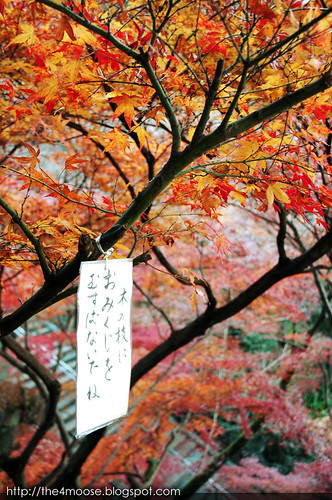
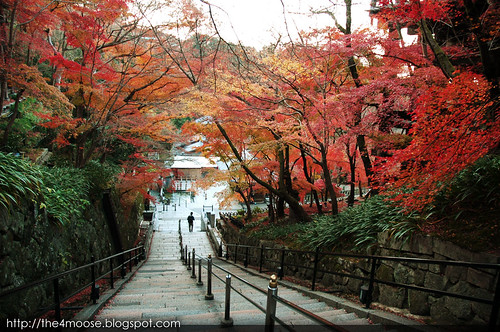
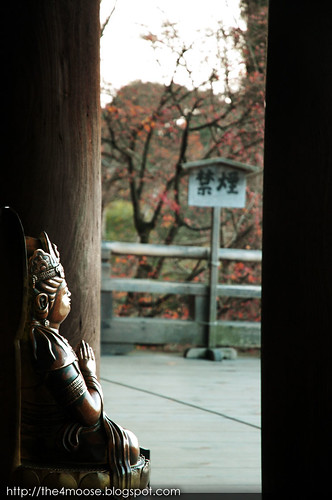
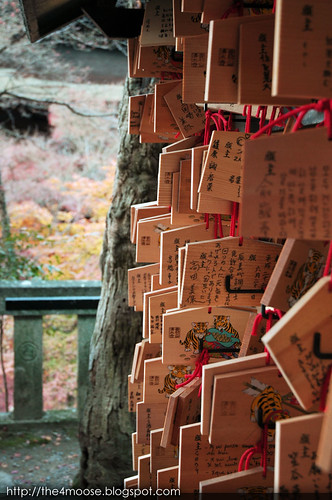
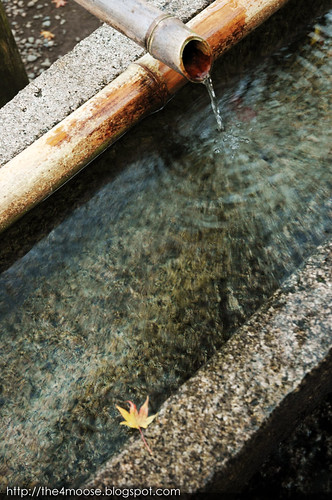
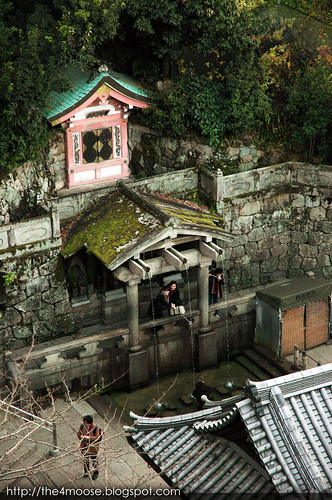
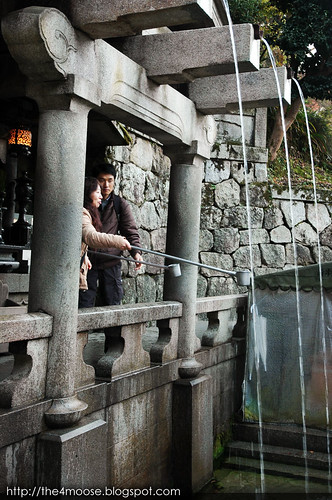
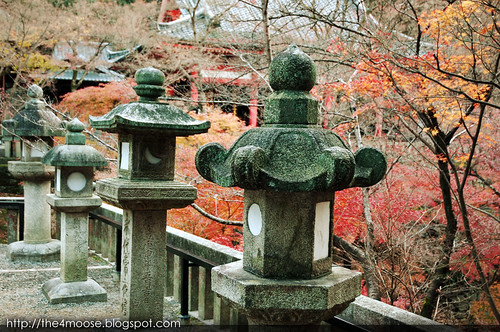

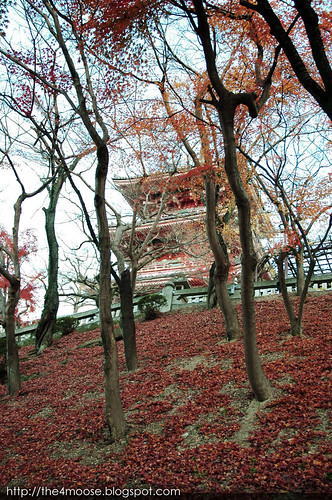
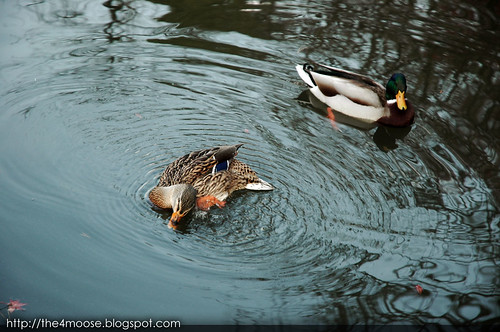
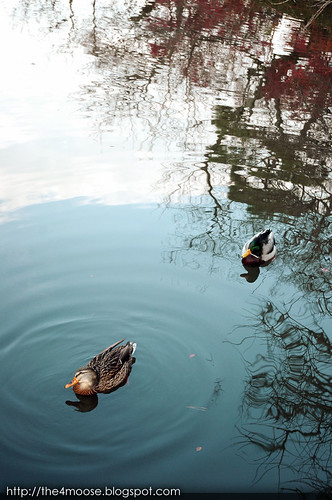
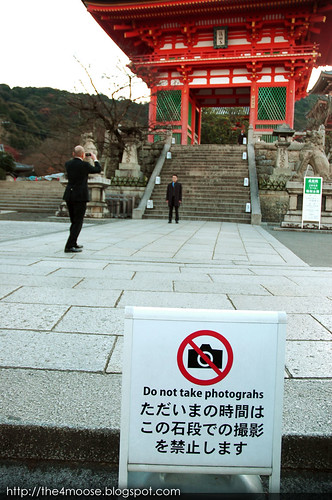
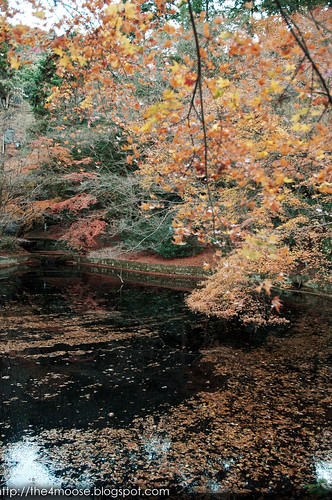
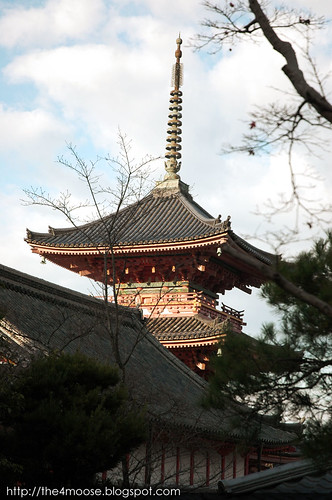
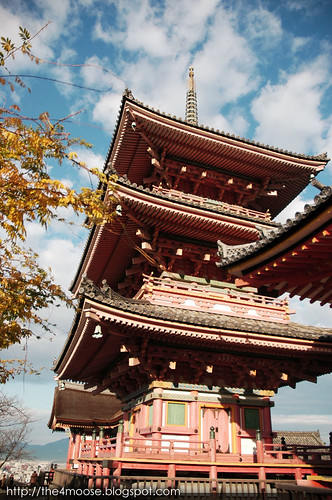














Nice shots!
ReplyDeleteAll your photos are very well-taken. I need to save up for Japan trip now!
ReplyDeleteto Andrew: Thank you! =)
ReplyDeleteto BellaV: Thanks! You won't regret it ;) Japan is a really nice and interesting place to visit. Kyoto is my favourite!